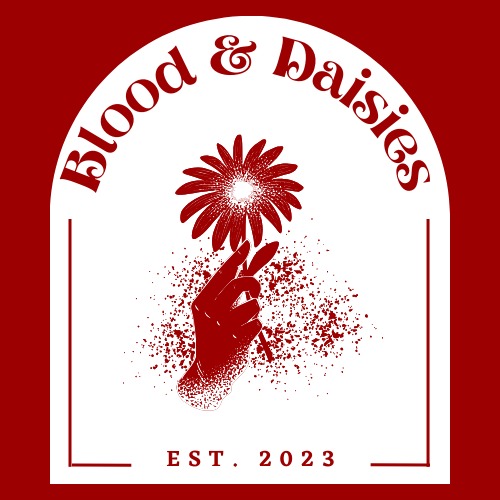
The Crimson Moon and the Golden Field
Mabon stands at the hinge of the year, when light and dark weigh equal for one brief moment before the balance tilts towards shadow. The equinox is not a pause but a turning — the hand that gathers harvest is the same hand that prepares for winter. To honour this festival is to honour the fullness of contradiction: gratitude and grief, ripeness and withering, continuity and surrender.
The Second Harvest
In the cycle of the agrarian year, Mabon is the second harvest. The first came with Lughnasadh in August, the cutting of the early grain. Now the great bounty of fruits and vegetables is gathered in: apples pressed into cider, gourds piled high, onions and garlic braided to hang in kitchens. The work was practical — filling storehouses, salting meat, counting grain — but it was also sacred. Survival meant balance: take enough, waste nothing, and preserve life through the months of cold.
Rituals emerged from this balance. Across Britain and Ireland, the final sheaf of wheat was fashioned into a Corn Dolly, believed to carry the spirit of the field. She was honoured through winter, then ploughed back into the soil in spring, ensuring fertility’s return. The harvest was never merely an end; it was a covenant between people, land, and spirit.
Echoes Across Cultures
Though “Mabon” is a modern name, the autumn equinox has been marked for millennia.
- Greece: The descent of Persephone into the underworld defines this season. Her absence brings Demeter’s grief and winter’s barrenness — a myth that explains not just agriculture, but the inevitability of loss in cycles of life.
- Rome: Festivals of Pomona, goddess of orchards, celebrated the fruit harvest with offerings of apples and pears. Wine-making rituals also reached their peak at this time.
- Norse lands: The god Freyr, associated with fertility and peace, was honoured with stored grain and mead. Herd animals were culled to prepare for winter, their sacrifice woven into feasts that marked both gratitude and survival.
- Slavic traditions: Dożynki, the great harvest festival, saw communities parading wreaths woven from the last sheaves, with bread and song offered to thank the fields.
- Mesoamerica: The Maya and Aztec aligned temples such as Chichén Itzá so that the equinox sun cast descending shadows, transforming stone into serpents of light — proof that balance itself was sacred.
Wherever people lived close to the land, the equinox was a reminder: all abundance comes at a cost. To feast was to give thanks, but also to accept that the wheel turns, and plenty will fade.
The Balance of Light and Shadow
Beyond the fields, the equinox carried spiritual weight. Druids are thought to have gathered in sacred groves at this time, contemplating harmony, balance, and the cycle of renewal. The equal night and day spoke of the need for inner equilibrium: to hold grief in one hand, joy in the other.
Modern neopagan practice continues this meditation. Altars may be dressed with red apples, purple grapes, pomegranates, or jars of honey. Some practitioners write down the year’s blessings alongside what they wish to release, burning or burying the latter as an offering to the turning year. Gratitude and letting go — twin truths of the equinox.
The Invention of Mabon
Interestingly, the festival’s name is not ancient. “Mabon” was added to the modern Wheel of the Year in the 1970s by Aidan Kelly, an American scholar and practitioner. Seeking to give each sabbat a mythological anchor, he borrowed the name from Mabon ap Modron, a youth in Welsh mythology whose name means “Son of the Mother.” In the medieval tale of Culhwch and Olwen, Mabon is stolen from his mother three nights after his birth and later rescued by Arthur’s men.
Though the myth itself was not originally tied to the equinox, Kelly saw in Mabon’s themes of loss, return, and hidden wisdom a resonance with autumn’s balance of light and shadow. Over time, the name stuck, especially in Wiccan and neopagan circles, and is now widely used for the autumn equinox sabbat.
This blending of ancient practice and modern naming shows how traditions evolve. The equinox has always been marked — but “Mabon” as we know it is a reminder that we continue to reinterpret the past to give meaning to the present.
Offerings and Continuity
What remains constant is the impulse to give thanks and to mark the shift of the year. From corn dollies to cider-pressing, from wreaths of wheat to equinox altars, the gestures speak the same truth: what we have is fleeting, what we give endures.
In today’s kitchens and gardens, preserving fruit, baking bread, or lighting a single candle carries forward that ancient rhythm of gratitude and reciprocity. Even the simple act of sharing food with friends keeps us in step with ancestors who once feasted under the same crimson moons.
Standing in the Golden Field
To walk the equinox is to walk with awareness. The land tells its story: hedgerows heavy with berries, geese cutting patterns in the sky, leaves turning flame before they fall. Everything whispers both harvest and farewell.
And so we stand between. Between feast and famine, abundance and decay, memory and anticipation. The crimson moon rises over the golden field, and we are reminded that Mabon does not ask us to choose between joy and grief — it asks us to hold them together, bound as tightly as the last sheaf of grain.
